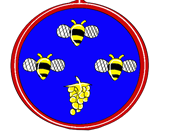 Bardic Classes Bardic Classes 
|
| A Poetic Study of Chinese |
Rudaba al-Nahdiya |
I will be sharing some period and original poetry to showcase Chinese culture, both in period,
and in SCA time. Several poetry forms will be discussed along with my applications of them in my
bardic works. This class also covers a little pronunciation practice.
|
| Anglo-Saxon Alliterative Verse and Riddles |
Hilla Stormbringer |
Description: Not all poetry rhymes! In fact, the earliest known English poetry did not rely upon rhyme
at all! It relied on alliteration and counted stresses instead. This form was used for poems short and
long, and carried through to riddles as well. Come learn how this form of poetry is structured and
learn how to write your own!
|
| Finding Your 'Period Voice' - How to sound more like your persona when telling a story. |
Grim the Skald |
Telling a story in prose goes back to pre-history, but how do you best not sound like a person from the 2000s? I will go over a number
of the traps that bring people out of the story, as well as a few techniques you may use to sound more like your persona would have. I
will also give some advice as to develop your "voice" to get the right speaking style, though of course that varies widely by period and
culture.
This is my first time teaching this class - feedback on improving it is welcome!
|
| Flirts & Fools: an Intro to Commedia dell'Arte |
Niccolò Bartolazzi |
Harlequins, braggarts, slapstick, bawdry, disguises, laughter! Learn about the masked semi-
improvisational farcical Italian Renaissance theatre that is commedia dell'arte!
|
| Introduction to Performing Arts in the SCA |
Ollamh Brendan O Corraidhe |
"All the world's a stage," as 'tis said. Do you have an interest in singing, storytelling, or
some other performance art? This class will cover the different sorts of performing commonly
found in the SCA, historical context, information on typical SCA venues, finding source
material, and tips for practicing and performing. The facilitator has 35+ years of performing
experience in the SCA.
Handout:
https://docs.google.com/document/d/1qO6YYBQ1dk3WJSwG7LRUPtaCsWHt9OvRHPf_xOYa5OE/edit?
usp=sharing
|
| Knotwork Music |
Tigernach Bard |
A class on the history of Celtic music being transcribed into knotwork and how to transcribe your
own music into knots.
|
| Mad Words: Comedic Theatre of Japanese Kyōgen |
Niccolò Bartolazzi |
Often translated as "mad words", kyōgen is a style of comedic theatre begun by the Fourteenth
Century in Japan and continued today, often as a companion to the more serious nō dramas. The
class will include a (pre-recorded) demonstration and diagram of a kyōgen play.
|
| Overview of Norse Poetry |
Grim the Skald |
Iambic pentameter got you down? Want to know what exactly a “ring giver” is? Do you want to write a line that ends with "silver?" Are you a fan of Egil Skalagrimson (who isn't?) Come on over, and we’ll go over the basics of Viking-Era poetry. I will go over how Norse poetry alliterates, talk about the types and ways Norse poetry was used, and go over poetic devices such as kennings. We'll then go over style and format, and the specific forms Norse poetry takes. Whether you want to try your hand at writing it, or just want a better appreciation of the form, stop by!
|
| Text to Tale - Crafting a compelling performance from source material. |
Ollamh Brendan O Corraidhe |
A simple process for taking source material and turning it into a powerful performance is
presented, using as case studies two very different pieces.
PG-13 for descriptions of graphic violence and sexual themes.
One, "Gawain and the Green Knight,", was worked up over a period of six months. It's a 30-
minute prose rendition of the famous tale of knightly virtues, attempted seduction, and
sorcery. Video of the first part, performed at Midrealm Bardic Madness:
https://www.youtube.com/watch?v=7mG4MnMZwtM
The second, "The Death of The Cid," was cooked up *literally overnight*, but resulted in me
being named as Queen's Champion the next weekend. I performed it at Pennsic, where a Crown
Prince sought me out afterward to thank me for the story.
|
| The Citole and You (and How to Fake One Too) |
Adelisa Salernitana |
Do you like early medieval music and wish you could play a musical instrument, but are uncertain about your own skills and are as
hopeless with recorders as I am? Do you already play guitar and want to try a medieval stringed instrument but the price of even the
basic models makes your eyes water? Fear not! There is a solution!
This class is an introduction to the citole, the ubiquitous 4-string instrument popular from the 11th to 15th centuries in Europe and
one of the ancestors of the guitar. We'll talk about the music that can be played on it, why it's an easy instrument to get into, and
most importantly, how you can invest in a citole-substitute for learning the instrument for about $80 (more or less) and at the same
time, have something that won't look too out of place at a medieval event.
|
| The History of the Jester |
Alienor Hathaway |
A jester or fool, was an entertainer, sometimes in the household of high rank or sometimes a
traveler who performed for the public. They had a variety of skills and types. This class will
discuss the Jester in the Middle Ages and Renaissance.
|
| The New Bard's Road Map |
Drake Oranwood |
A how-to primer for new or aspiring bards. Developing a repertoire, finding performance
opportunities, seeking mentors and patrons, gaining visibility, becoming part of the bardic
community.
|
| The Nitty-Gritty Craft of Songwriting |
Ciaran mac Breandain |
A conversation on the details of songwriting. We'll discuss ideas and inspiration, types of songs,
writing a compelling story, music, and other nitty-gritty details. Co-taught with Mistress Rosalind
Jehanne.
|
| Writing Humorous Songs |
Cerian Cantwr |
Discussion of the elements of comedy and how to use them in writing humorous songs.
|
| Intro to the Plucked Psaltery |
Elizabetha de Picardia |
The plucked psaltery (or lap harp) is a simple musical instrument that was popular in the Middle Ages. This is a practical class on how to start playing this simple, affordable, and versatile instrument. Prior musical knowledge is not required.
|
| Introduction to 5th Century BCE Athenian Theater |
Andromacha of Lesbos |
An amateur's take on 5th Century BCE Greek theater
|
| Lyric-writing workshop |
Gwendolyn the Graceful |
As a class we will discuss some principles of lyric construction, choose a theme, and each attempt a
flash draft of a new poem or song on that theme.
|
 Brewing Classes Brewing Classes 
|
| Period Distillation |
Don Caiaphas |
An overview of the history and how distillation was performed in period.
|
| An Apple a Day - the history of cider |
Oswyn of Baðon / Oswyn Swann |
A walk through the history of cider and some information for the modern maker in the Midwest.
|
 Cooking Classes Cooking Classes 
|
| A Feast of New Foods |
Gwyneth ferch Aeddan |
In the last quarter of the 16th century in Italy, new foods from the Americas started to move on
from being known only as curiosities to botanists and explorers to being widely enjoyed foods.
Come and learn of these new foods, in recipes inspired by the great chefs of the time: Pomo d'Oro,
Turkie Corn, Turkey-cock, Potato roots and Potatoes of Virginia, pompion, and Chocolate.
In AS LVI, I planned and stewarded A Feast of New Foods. I was inspired to serve as much as I
could of foods that we don't usually think of as known to Europeans in SCA period, while keeping
the recipes and the overall feast design as accurate as practical. In this class, I'll talk about
the research, creativity and planning that went into this feast. I'd also love to talk about what
went fabulously well with the kitchen and serving team and feast allergy management, and what we
could improve.
|
| Archaeology of the Roman Diet |
Fina MacGrioghair |
This is a lecture class focusing on how
recent archaeological finds have changed
our understanding of the Roman diet. The
class will focus on recent archaeological
digs at the port cities of Herculaneum and
Pompeii. It will discuss how new finds and
methods are being used to re-examine the
traditional viewpoint of the diet of the
average citizen and reach towards a better
understanding of the diets of these
members of the Roman population.
|
| Feast Planning and Logistics: A Case Study |
Hirakawa Kagetora |
Careful planning can help mitigate even the worst of conditions. Find out how we hosted a well-reviewed Roman feast for 80 guests in the middle of an ice storm. Topics will include how we prepared, how we adapted, and what lessons were learned as part of the process.
|
| From Page to Pan: A step by step approach to accurate recipe redaction |
Guenièvre de Monmarché |
You’re a good cook. You’ve even worked with some medieval recipes from modern cook books - but now you want to work
directly from medieval manuscripts. The only catch is, how do you follow a recipe that has no quantities, no cooking time or
temperature, and several ingredients you don’t recognize? In this class we’ll talk about taking a systematic approach to
turning vague medieval cook’s notes into a consistent, reproducible modern recipe. We’ll talk about translation,
measurements, techniques and more, with recipe examples from English, French, German and Italian sources.
|
| History of Celtic food |
Ekaterina Silesia |
What early Celts ate, ingredients and how it was prepared.
|
| How to Build A Clay Oven |
Lady Caryn of Cynnabar |
We built a clay oven in our backyard, and so can you! This class will go over how we made our oven,
as well as tips and tricks for building and maintaining a clay oven of your very own!
PLEASE NOTE: this is a pre-recorded class, and may be viewed at any time. It will not be taught
live.
Video Link: https://youtu.be/evPDnNkYCeE
|
| How to determine the amount of spice in a medieval recipe - the flavor matrix revealed! |
Arwyn of Leicester |
Come learn about new emerging research about the flavor matrix and how it can be applied to
medieval spices. We will then compare two stew recipes (beef and chicken) to modern ones
and use flavor matrix pairing concepts to help us with initial trial flavoring starting points.
The hand out will have the list of spices that would be useful and also a pestle and mortar if
you are going to hand grind them. If you don't have them in your cupboard, we will still
describe them!
|
 Music Classes Music Classes 
|
| History of the Harpsichord |
THL Jolica atte Northclyfe |
Explore what makes the harpsichord a unique and beautiful instrument, and learn how it compares with similar instruments such as the
virginal, spinet, organ and piano. We’ll listen to harpsichord music by leading period composers, and enjoy images of gorgeous period
harpsichords. Suitable for ages 12 and up.
|
| Making Medieval Stringed Instruments |
Arden of Icombe |
Describes the mechanics and basics of medieval stringed instruments, how they were constructed, and offers some information on making simple instruments yourself with household tools.
|
| Physics of Aerophones |
Hirakawa Kagetora |
Have you ever wondered about how a flute makes sound, or what a clarinet's reed is for? Join us in exploring the physics and mathematic principles underlying the creation of sound and music. You should have a basic background in algebra to get the most out of this class, but all skill levels are welcome.
|
| Playing with Open Tuning in Medieval Music |
Arden of Icombe |
The few tunings we have for medieval stringed instruments are open tunings, or tuning in an open chord. This class will go over how to use open tunings to fill out the sound of a monophonic medieval melody on plucked or bowed string and how to use it to accompany voice in medieval songs. Multiple examples will be used for both plucked and bowed melodic play and accompaniment.
|
| Sanshin: The Heart of Ryukyuan Music |
Kame Gusukuma |
Of all the traditional musical instruments of the Ryukyu Kingdom (modern-day Okinawa), the sanshin
holds pride of place as the quintessential Okinawan instrument. Its long history and strong
association with both high culture and folk art place it at the center of the Ryukyuan musical
tradition.
|
| A Brief Intro to Medieval Middle Eastern Dance |
Guðrún Sveinsdóttir |
The focus of this class is to briefly discuss the history of dance in the Middle East, the different
eras and areas that are involved, cultural and societal views of dance and dancers (both
professional and non-professional), and how all of this relates to Middle Eastern dance within the
SCA. PLEASE NOTE: this is a pre-recorded class, and can be viewed at any time. It will not be taught
live.
Link to video: https://www.youtube.com/watch?
v=UpRQKOSpvzE
|
 Other Classes Other Classes 
|
| Basic Sewing Techniques for Reenactors & Anachronists |
Guðrún Sveinsdóttir |
This class discusses useful and ergonomic sewing tools, some of the most common period hand-sewing
techniques, basic sewing machine techniques (and sergers), the pros and cons of hand vs. machine
sewing, and answers questions about specific projects. PLEASE NOTE: this is a pre-recorded class,
and may be viewed at any time. It will not be taught live.
Video link: https://www.youtube.com/watch?
v=SkiGRvOSGuw
|




